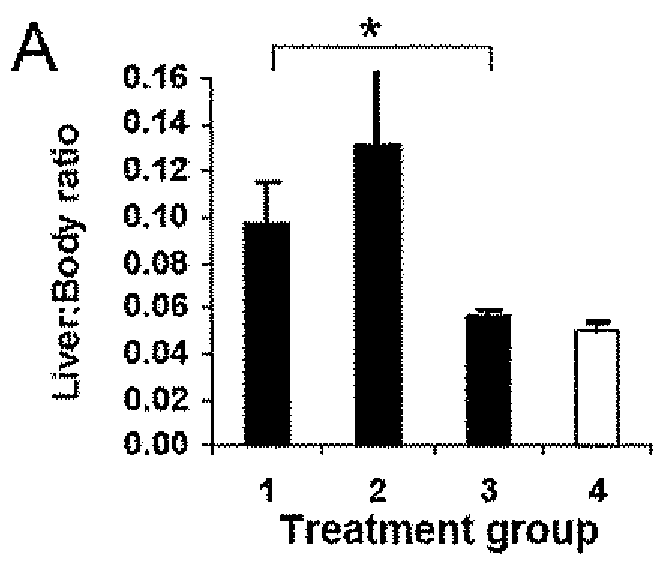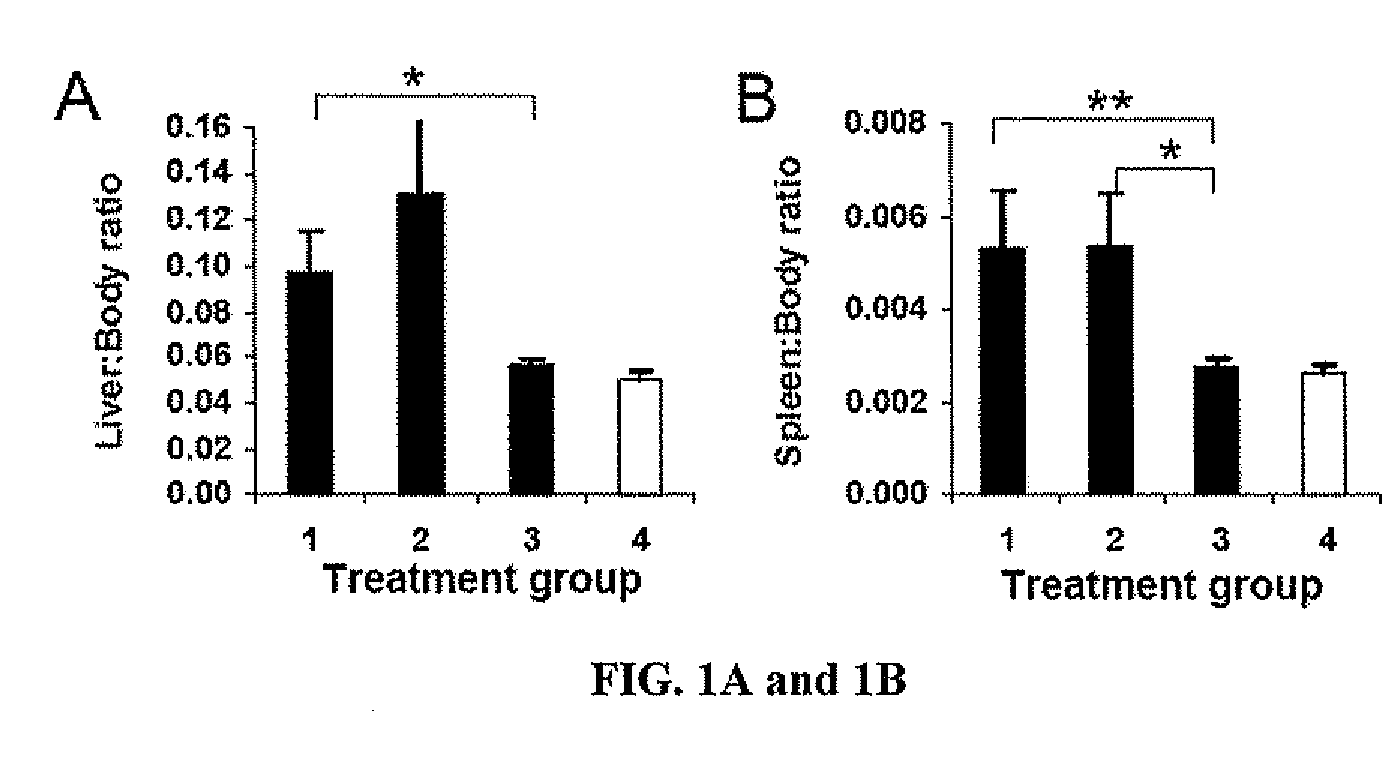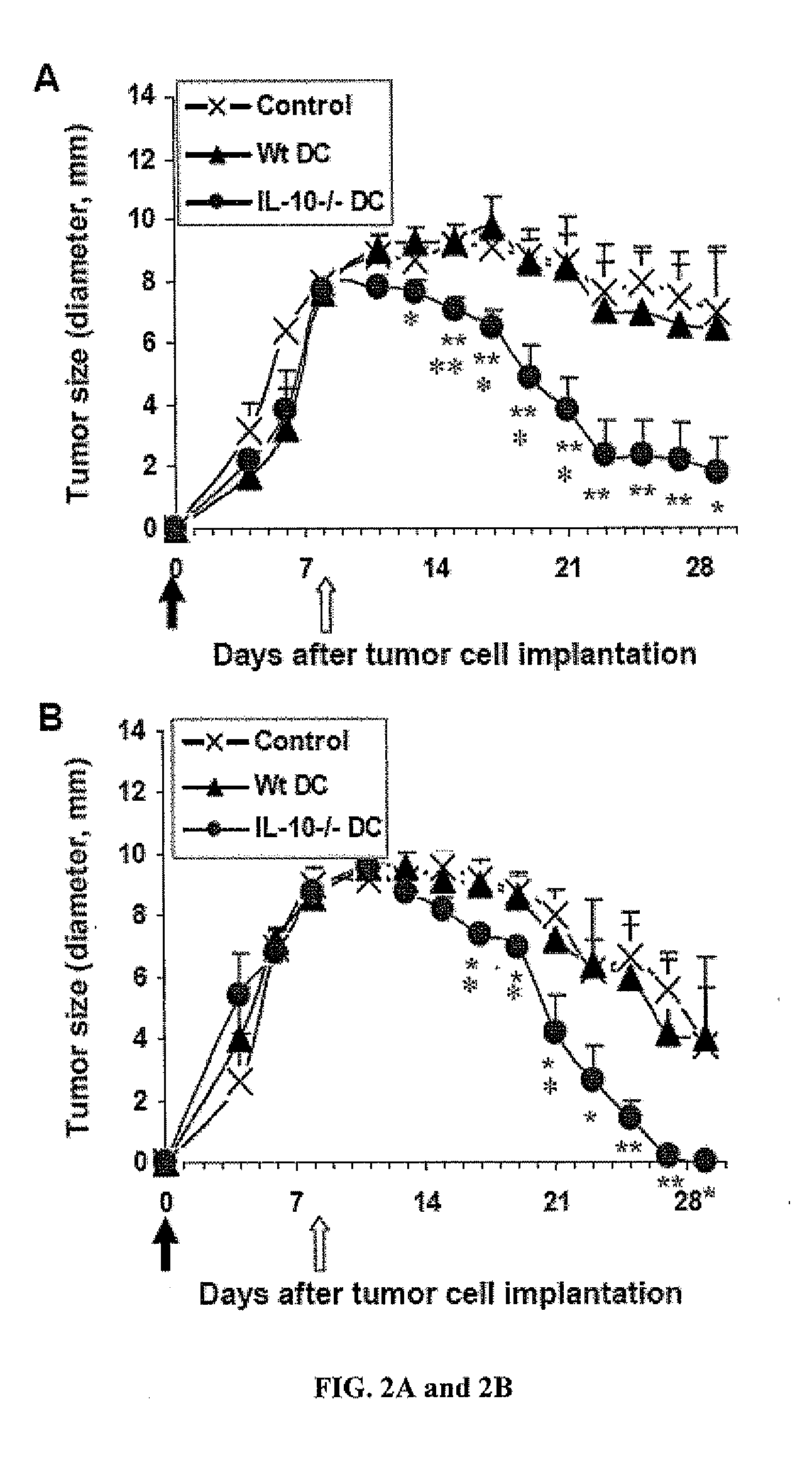Anti-tumor vaccines delivered by dendritic cells devoid of interleukin-10
a dendritic cell and immune system technology, applied in the field of genetically engineered antigen presenting cells and vaccines, can solve the problems of lack of clinically achievable general efficacy and consistency, and the inability of dc to exert tolerogenic effects on the immune system in some conditions, and achieve the effect of high cell-based
- Summary
- Abstract
- Description
- Claims
- Application Information
AI Technical Summary
Benefits of technology
Problems solved by technology
Method used
Image
Examples
example 1
IL-10− / −DC as a Highly Immunogenic Cell Vector for the Delivery of Vaccines Against Hepatocellular Carcinoma in a Mouse Model
[0093]Materials and Methods
(a) The Establishment of a Liver Tumor Model in Immune Competent Mice:
[0094]Several mouse models of liver cancer have been previously developed. These models are however established either as a special transgenic animal for a particular liver cancer gene, or in immunodeficient mice (e.g. nude mice with no T-cells). The primary function of DC is to activate T-cells, especially naïve T-cells, important in the initiation of immune responses. To study DC functions and their roles in anti-tumor immunity, therefore, it is necessary to create such a model in immunocompetent animals.
[0095]A novel liver cancer model was successfully developed in an immune competent normal C57BL / 6 inbred mouse strain, by direct injection of the tumor cells (HEPA 1-6 mouse HCC cell line, of C57BL / 6 origin) into liver through the portal vein (PV-HCC).
[0096]Under...
example 2
Therapeutic Potential of the IL-10− / −DC Vaccines Reconfirmed In an Intra-Flank HCC Tumor Model
[0104]To confirm the therapeutic potential, the DC tumor vaccine was also tested systemically in an extra-hepatic tumor model, which was established by intra-flank subcutaneous injection of the tumor cells in immunocompetent mice (IF-HCC).
[0105]Materials and Method
[0106]Normal C57BL / 6 mice were injected into the left flank s.c. with 10-million Hepa 1-6 tumor cells at Day 0 (solid arrow). By Day 7, sizable tumors were measurable (7-10 mm in diameter) and, at Day 8 (open arrow), the mice were given intravenously one injection of the tumor antigen-loaded WtDCs or IL-10− / −DCs. Tumor development was measured at daily intervals, and expressed as diameters of the tumor mass. Control groups (Control) were tumor-bearing mice treated with PBS only. DCs generated in the presence of GM-CSF alone (GM DC, results combined from 2 repeated experiments, n=9, FIG. 2A) or GM-CSF plus IL-4 (G4 DC, n=5, FIG. 2B...
example 3
The IL-10− / −DC Vaccine is Highly Effective in Triggering Protective Anti-Tumor Immunity Through Establishment of Immunological Memory
[0109]The IF-HCC model was also used to further study the immunological mechanism underlying the anti-tumor effect by pre-vaccination of the mice prior to tumor implantation.
[0110]Materials and Methods
[0111]Groups of normal C57BL / 6 mice (n=4) were first given 2 injections of the DC-vaccines at bi-weekly intervals (open arrows), followed by tumor implantation at day 28 (solid arrow). Tumor development was measured at daily intervals post-tumor implantation, and expressed as diameters (upper graph) and volume (lower graph) of the tumor mass (FIG. 3A).
[0112]In vivo Hepa 1-6 antigen-specific cytotoxic killing in lymphoid organs of the DC-vaccinated mice was subsequently evaluated. Normal naïve C57BL / 6 mice were immunized twice as described above in (FIG. 3A). Two weeks after the second vaccination, the mice were injected with tumor-antigen-pulsed and CFSE-...
PUM
| Property | Measurement | Unit |
|---|---|---|
| Gene expression profile | aaaaa | aaaaa |
| Immunogenicity | aaaaa | aaaaa |
| Inhibition | aaaaa | aaaaa |
Abstract
Description
Claims
Application Information
 Login to View More
Login to View More - R&D
- Intellectual Property
- Life Sciences
- Materials
- Tech Scout
- Unparalleled Data Quality
- Higher Quality Content
- 60% Fewer Hallucinations
Browse by: Latest US Patents, China's latest patents, Technical Efficacy Thesaurus, Application Domain, Technology Topic, Popular Technical Reports.
© 2025 PatSnap. All rights reserved.Legal|Privacy policy|Modern Slavery Act Transparency Statement|Sitemap|About US| Contact US: help@patsnap.com



